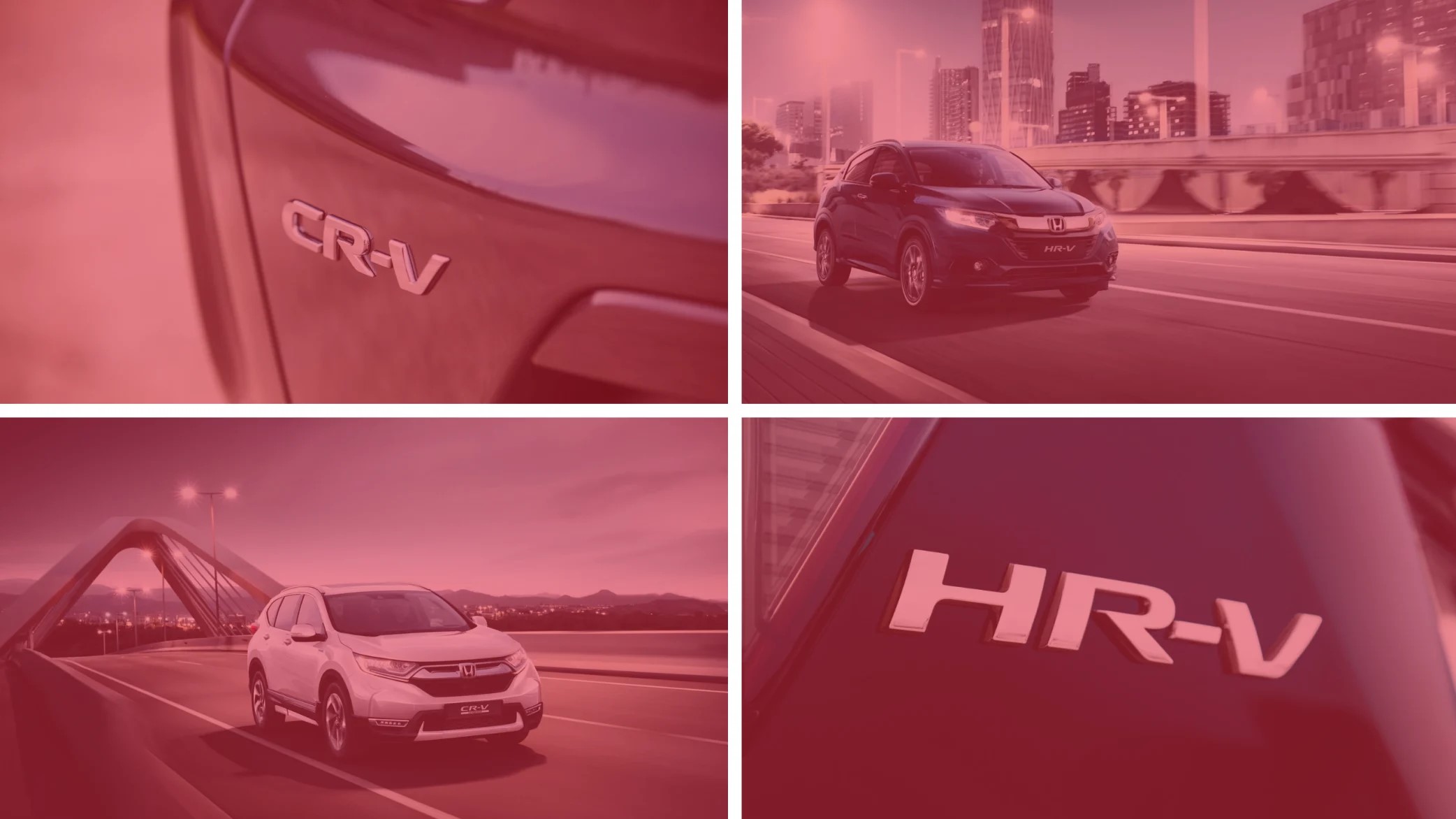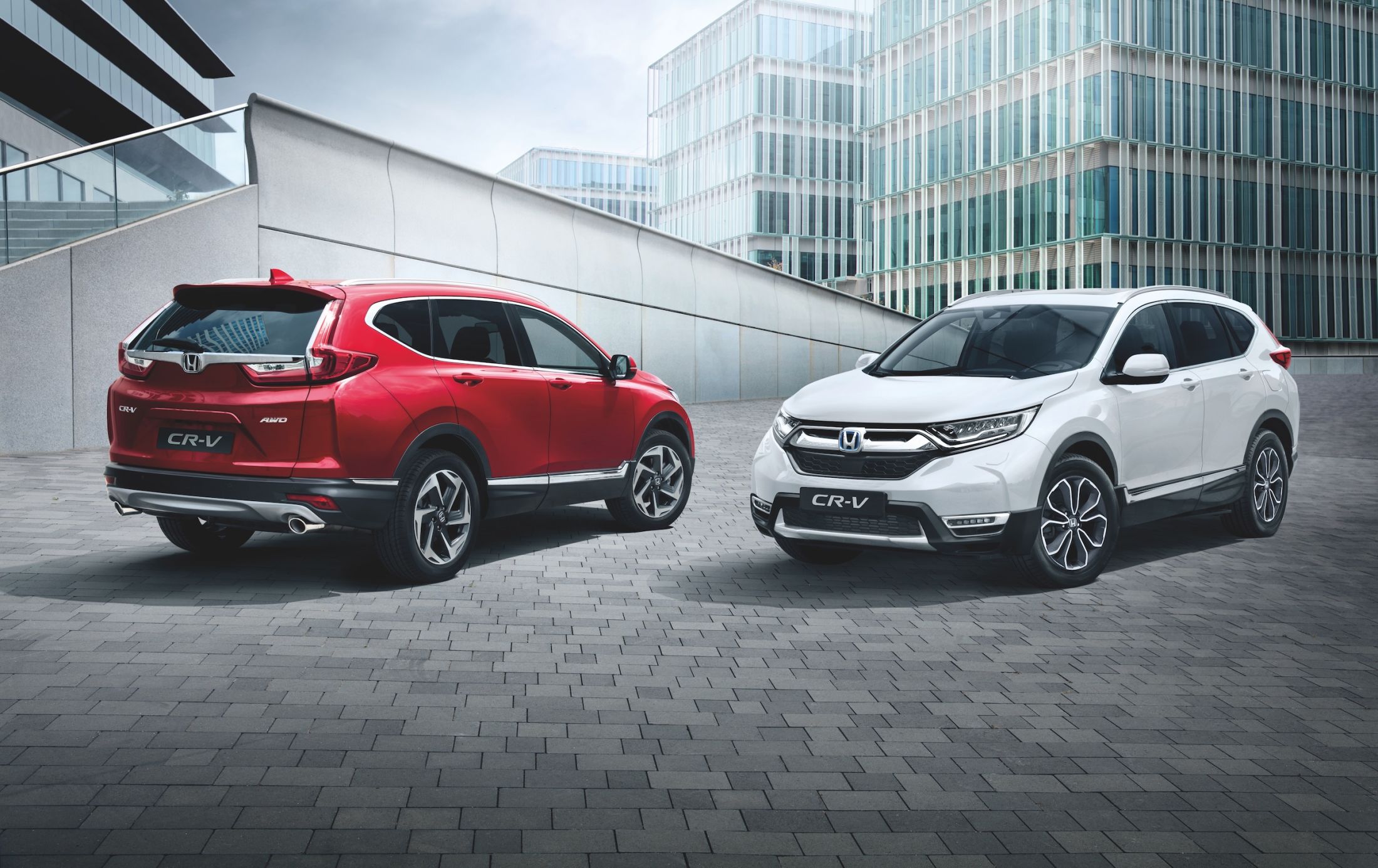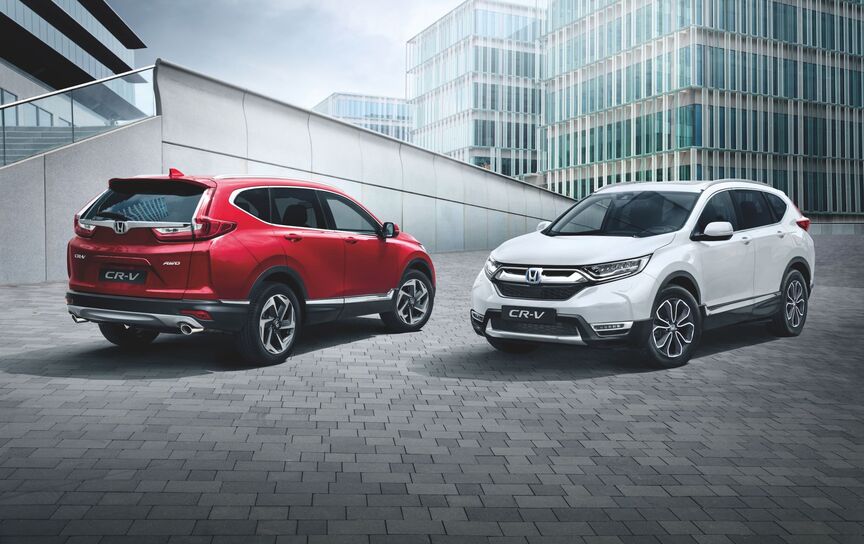
Your questions answered
Rugged and powerful, yet stylish and practical – the modern SUV has become a mainstay on British roads for all the right reasons. From its earliest roots in the 70s, the SUV has evolved the become the top choice for both families on the school run and someone looking for a reliable car for the motorway. Join us as we answer some of the most popular questions and attempt to demystify one of the Europe’s favourite car classes.

WHAT IS AN SUV?
The abbreviation ‘SUV’ stands for ‘sport utility vehicle’. It’s a high-riding, comfortable car that’s typically spacious – making it ideal for families. SUVs are available in a range of sizes, can be had with or without four-wheel drive and at Honda come in a choice of either petrol or hybrid powertrains.
WHEN WERE SUVS CREATED?
SUVs have their roots in the simpler off-roaders, or 4x4s, of the 1970s and ’80s – cars that were once relatively niche vehicles put to use by those living in rural areas. But by the mid ’90s, the 4x4 had been refined into something altogether more sophisticated and appealing: the sport utility vehicle.


WHAT’S GOOD ABOUT AN SUV?
There are so many good points about SUVs, which explains why they have become one of the most popular types of car sold in Europe.
They boast a raised seating position and have good ground clearance, which in turn makes them both comfortable and reassuring to drive.
They soak up poor road surfaces and offer a great view of the road ahead as well as the surroundings.
And with lots of cabin space and, generally, a large boot, they’re also supremely practical – making them ideal for families who need space to stretch out. But the cleverest trick of all is that they feel just like a normal car to drive and offer the same level of performance, road holding, fuel economy and safety.

ARE THERE SUVS AVAILABLE WITH HYBRID POWERTRAINS?
Hybrid SUVs have become increasingly popular due to them being as powerful and spacious as a petrol or diesel SUV, while having the benefits of fuel efficiency and ease of driving that comes with hybrid powertrains. At Honda, we’ve been selling hybrid cars in Europe for 20 years, and our accumulated knowledge and experience can be seen in the all-new CR-V Hybrid.
Available with our responsive, smooth and efficient e:HEV Hybrid technology, the CR-V Hybrid’s engine automatically selects the optimum driving mode, and you’ll never have to plug it in as it generates its own electricity.
Discover the all-new CR-V Hybrid
ARE ALL SUVS FOUR-WHEEL DRIVE?
Not all SUVs are four-wheel drive. That’s because not all drivers need it to be suitable for driving in the countryside, but for more urban environments.
Honda offers the choice of systems for particular models. For example, you’ll find that the latest generation Honda CR-V is available in both two-wheel drive and all-wheel drive, depending on the grade.

WHAT'S THE DIFFERENCE BETWEEN AN SUV AND A 4x4?
The SUV is a versatile and popular family car that offers all the plus points of an estate car together with advantages such as increased ground clearance and better visibility.
They feel car-like to drive, are very comfortable and stable and make good towing cars. And if they’re four-wheel drive, SUVs are also ideal for the occasional light excursion off-road, such as tackling a country track or parking at a sandy beach.
A traditional 4x4 is designed to be driven in more rugged terrain, should the need arise, which means it feels less car-like to drive on the road, is heavier and consumes more fuel.

CR-V
Honda’s largest SUV is the CR-V, costing from just over £27,000. The CR-V comes with five or seven seats (depending on the grade) and offers plenty of cabin space and a generous boot, so that a busy family would find it more than practical enough for their needs, with extra seats for things like the school run or ferrying the kids’ friends to clubs or birthday parties.
From just over 27K

HR-V
On the other hand, you might want an SUV that’s a touch more sporty and compact, which is where the Honda HR-V comes in. Costing from less than £21,000, it is designed with the style and attitude of a coupé yet, with five doors, is just the sort of SUV a couple or young family would find ideal.
From less than 21K
WHAT’S THE DIFFERENCE IN SIZE BETWEEN THE HONDA HR-V AND CR-V?
Check out our comparison chart to see the difference in size between the Honda HR-V and CR-V. For the dimensions of individual variants and trim levels, click here to download the brochure containing technical specifications.

DOES HONDA OFFER A SEVEN-SEAT SUV?
Honda’s CR-V is available with five or seven seats*. Recognising that many people won’t always need all seven seats in use, the engineers designed the row of rearmost seats to fold away. They lower into the floor and leave a perfectly flat boot area for loading luggage and can be raised again in a moment.
The seven-seat Honda CR-V is available with a 1.5-litre turbocharged petrol engine and a choice of manual or CVT automatic gearbox. When picking the manual gearbox, there is also the option to have four-wheel drive.
*The CR-V Hybrid is not available with seven seats.
DOES AN SUV OFFER A LOT OF BOOT SPACE?
You’ll find that an SUV is designed with practicality in mind. It will have both a generously proportioned boot and neat touches, such as levers in the boot area that allow you to lower the back seats without having to stretch forward to the seats themselves or fastening points for attaching a luggage net. At the same time, look out for convenient features such as electrically powered tailgates and hands-free access that allows you to wave a foot below the back bumper to open and close the boot when the car detects the key is present. It’s handy to have when you’re unloading bags from the supermarket shopping trolley!
COMPARING THE BOOT SIZE OF THE HONDA HR-V AND CR-V
(5 seats)
(7 seats)
431 litres
561 litres – (497 litres for hybrid)
150 litres
1,456 litres
1,638 – 1,796 litres
1,509 litres
CR-V
2.0 i-MMD 2WD or 4WD
1.5 VTEC Turbo AWD / CVT (5 seats)
1.5 VTEC Turbo AWD / CVT (7 seats)
Unbraked
600kg
600kg
600kg
Braked
750kg
2,000kg
1,800 / 1,500kg
HR-V
1.5 i-VTEC
1.5 VTEC Turbo / CVT
Unbraked
650kg
700 / 500kg
Braked
1,000kg
1,400kg
WHICH SUVS OFFER GOOD FUEL ECONOMY?
Continual refinement and engineering innovation has seen SUVs become increasingly frugal – but not all SUVs are created equal. For example, Honda’s CR-V 2.0 i-MMD Hybrid combines the smooth response of a petrol engine with the effortless pulling power of an electric motor to deliver both outstanding performance in all conditions together with impressive fuel economy. On the combined cycle it returns 40.9mpg – and independent reviews have seen even better fuel economy achieved during driving. The more compact Honda HR-V fitted with the 1.5 i-VTEC returns up to 42.8mpg on the combined cycle. For complete details about the fuel economy of individual models and different engines, transmissions and trim levels, download a brochure here.
ARE SUVS SAFE?
With a high seating position and the good visibility that affords drivers, an SUV is an inherently safe type of car. Like every Honda, the CR-V and HR-V SUV models are designed from the ground up with safety in mind. That’s why both models achieved a maximum five-star safety rating when independently tested by Euro NCAP. To see the results of those tests, click here.




.jpg/jcr:content/renditions/c4.jpg)
.jpg/jcr:content/renditions/c4.jpg)
